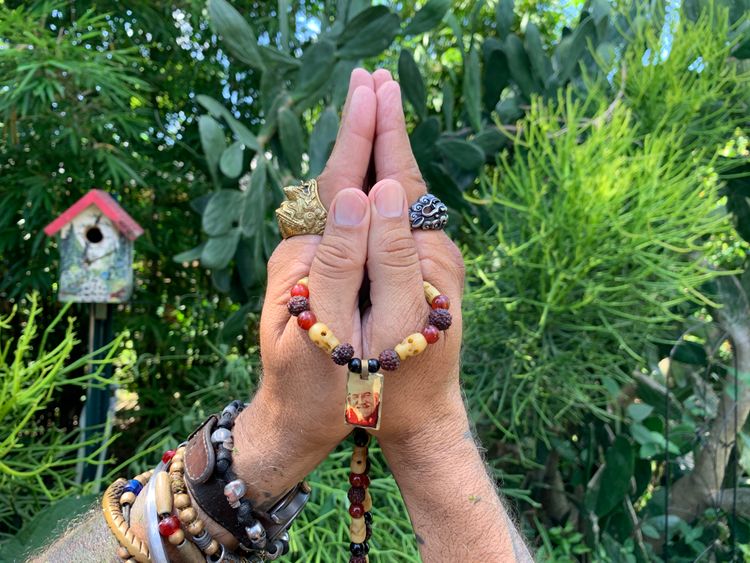Who Makes One?

I remember some years ago reading a book written by Zen Master Seung Sahn, (I can’t remember which one, there are so many). He discussed the question:
“Who makes one?”
Who makes one is a question that confronts our thinking. It attacks our concepts. It challenges our constructs. Who makes one contests our assumed right to comfortable conventional thinking. Comfort is the enemy.
But we love our constructs. We have a love affair with our concepts. We are infatuated with the things we believe in. Do we ever question why?
Bats see through echolocation (radar). Dolphins see assisted by sonar. Honeybees recognize flowers using ultraviolet light. Eagles see telescopically. Many animals see only in select colors or shades of gray. Humans can see in a variety of colors, yet our DNA endowment limits us. We can only see what we’ve been allowed.
What about things that exist that we cannot see with the unaided human eye?
Hans Lippershey (1570-1619) gave us the telescope through which we could better see the stars. Anton Von Leeuwenhoek gave us the microscope in 1683, so we could see bacteria. Ernst Ruska gave us the electron microscope in 1931 in order that we could view atoms.
And speaking of atoms, you of course realize that everything is composed of them. Democritus, ca. 400 B.C. stated:
“…that everything is composed of atoms, which are physically, but not geometrically, indivisible; that between atoms, there lies empty space; that atoms are indestructible, and have always been and always will be in motion; that there is an infinite number of atoms and of kinds of atoms ...”
You realize, then, two things, immediately; atoms are composed of atomic particles (electrons, neutrons, protons) and they are mostly a vacuity (which is a topic for another discussion). That’s right, atoms themselves are not a single entity and you are composed of largely emptiness.
Every oxygen, carbon, nitrogen, calcium, hydrogen and phosphorous atom that you are made of is an amalgam of atomic particles. Every molecule is a group of atoms bonded together. Every compound is a combination of molecules. Every cell in your body is a combination of water (H20), inorganic ions and organic molecules. You are simultaneously a combination of emptiness and something-ness. An interdependent, mobile, energy field; a biome. Every part of you is working collectively with every other part of you; cardiac muscle; nerve tissue; bone matter. You and everything around you is a walking, talking, breathing symbiosis. Not even one part of you is one.
So, who makes one?
In the Zen tradition, Shinichi Hisamatsu (1889-1980) proposes:
“The ten-thousand things return to the one;
the former is the ten thousand things,
into what place does the one return?
The one returns to the ten-thousand things.”
Lao Tsu posits:
“Enumerate the parts of a carriage and you have not defined a carriage.”
What does all this mean? Is science the answer? Is God (or Gods; Goddesses; The Tao; Brahma or The Force the answer?
Is there an answer? Do we need an answer? I’m going to hedge my bets and check ALL the boxes! What is important, in my experience, is remaining open.
Lao Tsu says:
“At birth you are supple and soft.
At death you are stiff and hard.
Grass and trees are pliant and tender when living,
but they are dry and brittle when dead.
Therefore, the stiff and hard are attendants of death,
the supple and soft are attendants of life.”
No one likes their opinions questioned. No one is a fan of having their perspectives examined. What is important is critical thinking. Until 1520 and Ferdinand Magellan the world was flat. Until 1543 and Nicolaus Copernicus, the Earth was the center of the universe. Since 1983, the Internet has transformed our planet into a global village.
Groupthink, lockstep, ignorance, and arrogance are the enemies of mankind.
Humans rose to primacy through collective effort, not rugged individualism.
The only way we thrive is through the extinction of greed and the creation of equal access. There is no scientific basis for race. There is no data to support the superiority or inferiority of one sex over the other. There is no religion that has a corner on the market for truth, but as Lao Tsu would say:
“Many spokes has the wheel,
but they all come to one hub.”
My favorite explanation comes from Robin Hood, Prince of Thieves (1991). Morgan Freeman, playing Azeem, a Moorish warrior, accompanies Robin (Kevin Costner) back to England. Azeem encounters a curious little girl who inquires of his dark complexion:
“Did God paint you?... Why?”
To which Azeem smiles broadly and laughs answering:
“Because Allah loves wondrous variety.”
There are limits to rational and discursive thought. In conclusion, who makes one?
“I don’t know.”
Seung Sahn would say:
“Understanding is nothing” or
“Only don’t know, put it all down, go straight. Save the world from suffering.”
Perhaps you can tell me: “What is the sound of one hand clapping?”
Check out our schedule to practice with Paul.





